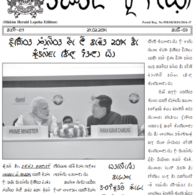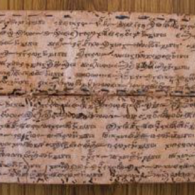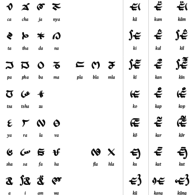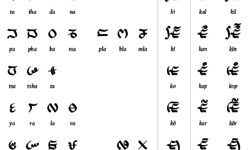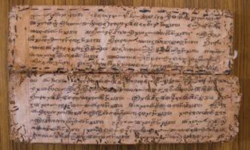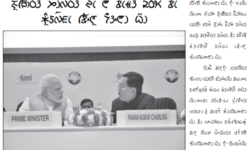Profile
The Sikkim Herald, a state-run weekly news bulletin in the Indian state of Sikkim, is a model of linguistic pluralism. It is published in no fewer than thirteen languages: Bhutia, English, Gurung, Lepcha, Limboo, Mangar, Mukhia, Nepali, Newar, Rai, Sherpa, Tamang, and Tibetan.Lepcha is perhaps more accurately called Rong. (The English name “Lepcha” derives from a Nepali insult meaning “inarticulate speech.”) Their own word for themselves is Róngkup (‘children of the Róng’), and their language Róngríng (‘language of the Róng’)–is the oldest language in Sikkim, pre-dating the arrival of the Tibetan and Nepali languages, and the Rong themselves are thought to be the original inhabitants of Sikkim.
The Rong language is spoken in Sikkim, in Darjeeling district in West Bengal in India, in Ilām district in Nepal, and in a few villages in south-western Bhutan–a tribal homeland they refer to as “hidden paradise” or “land of eternal purity.”
“Today,” Heleen Plaisier writes, “the [Rong] people constitute a minority of the population of modern Sikkim, which has been flooded by immigrants from Nepal. Although many [Rong] people estimate their number of speakers to be over 50,000, the total number of [Rong] speakers is likely to be much smaller. According to the 1991 Census of India, the most recent statistical profile for which the data have been disaggregated, the total number of mother tongue [Rong] speakers across the nation is 29,854.”
The Rong may be a minority, but they are not an abandoned minority. Like the Sikkim Herald, the state of Sikkim is unusually pluralistic. Rong (or Lepcha) is one of eleven official languages. Lepcha is taught in schools, there is a textbook department that develops official learning materials, and the government radio station broadcasts news bulletins and cultural programmes in the Lepcha language. There is even a Rong cultural conservation area in North Sikkim where few outsiders have been allowed to settle.
Yet the Telegraph of India reported in 2008 that Rong culture is endangered.
“The Lepchas are nature-worshippers and it is often claimed that their language has names for all the birds, plants, butterflies, animals and other insects as well as the hills and rivers in their native habitat. This knowledge, which is mostly passed orally, is disappearing fast as the community grapples with modernity.
“It is this vast but dying knowledge base that has been attracting researchers and academicians to Dzongu, the last bastion of Lepchas in the remote parts of North Sikkim, for conservation and documentation works.”
UPDATE June 2023 by Joseph Valoren
You can help support our research, education and advocacy work. Please consider making a donation today.
Links
General Script, Language, and Culture Resources
- Omniglot
- Wikipedia
- Unicode (PDF)
- Scriptsource
- Online Lepcha dictionary
- Hungarian-Lepcha Dictionary
- Lepcha Museum, Kalimpong
- Unravelling Lepcha Manuscripts
- A Brief Introduction to Lepcha Orthography and Literature (PDF)
- Peaceful Societies: Lepcha
- Unseen Sikkim: Lepcha People (YouTube)
- Lepcha: Sikkim’s First Tribal Community (YouTube)
- BBC News article on loss of Lepcha ritual at Kanchenjunga
- Article on digitizing Lepcha font
